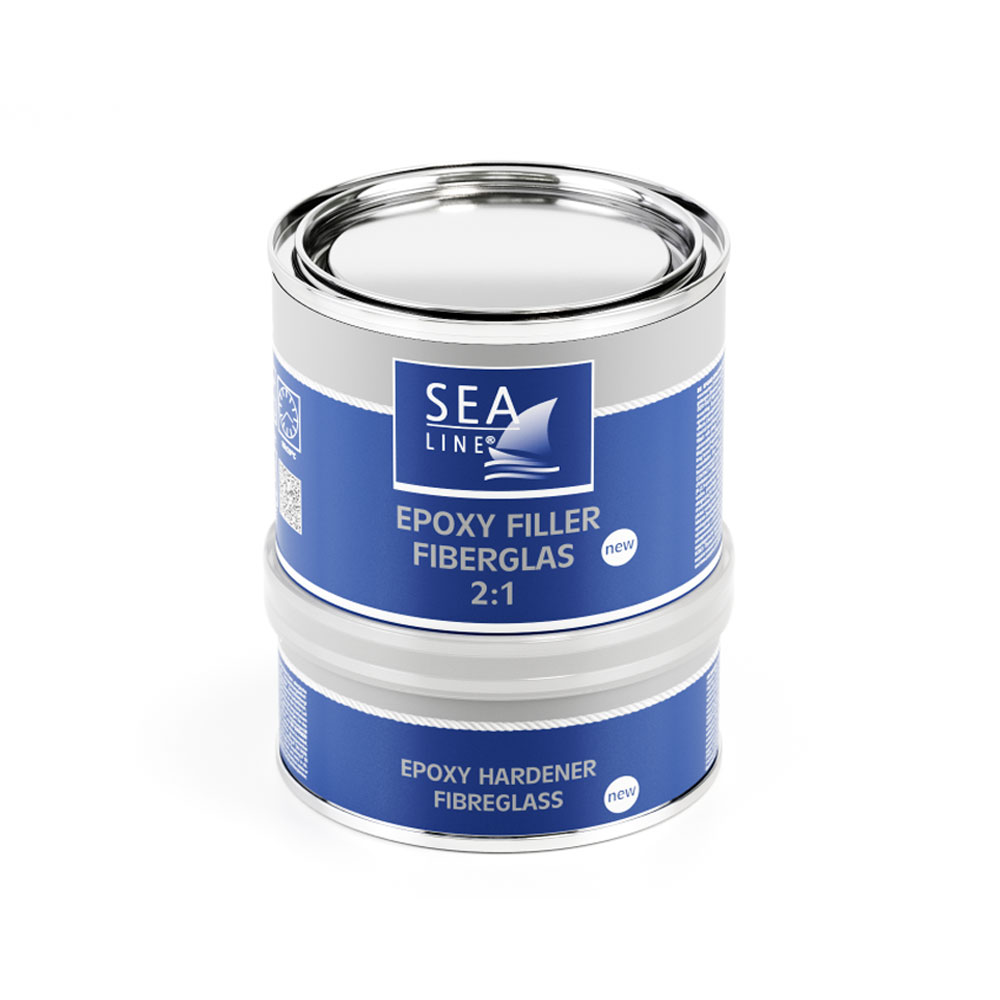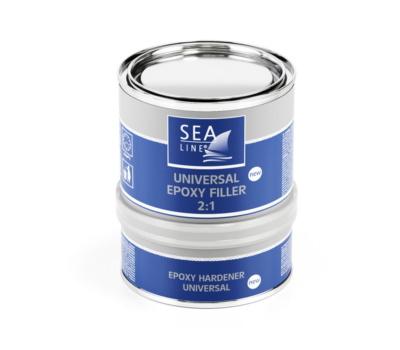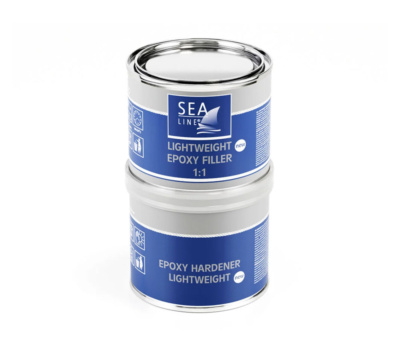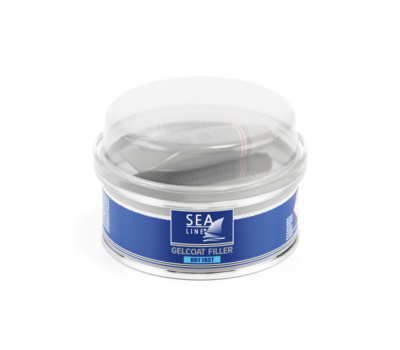Epoxy fillers, including fiberglass filler, are primarily the only fillers truly recommended for use both above and below the waterline.
They can certainly be applied to hull components constantly immersed in water as well. In short, they can be used on fiberglass, wood, steel, and aluminum.
| Weight | Code | |
|---|---|---|
| set (A+B) | 750 g | 12204 |
| component A | 5 kg | 12290 |
| component B (hardener) | 2,5 kg | 12291 |

| Type | GRP laminates, wood, steel, aluminum |
| Place | Above and below waterline |
| Function | Deep damages, gluing |
| Application | Putty knife |
| Color | light grey |

Epoxy fillers are primarily the only fillers recommended for use on hull components constantly immersed

Recommended for large areas due to low own weight

Gelcoat Filler is very fast hard and easy in use.
If the scratches are not deep, then we can renew the scratched side by polishing with Sea-Line polishing pastes. Above the waterline, when the scratches are not deep, the surface can be repaired with a DRY FAST gel coat filler. Deep scratches should be filled with epoxy filler (selected depending on the requirements of the scratched surface), painted with a primer and then painted with topcoat.
We recommend to always sand the surface between applying two different products to ensure uniform surface roughness and adhesion of subsequent layers. The sanded surface should also be cleaned and degreased.